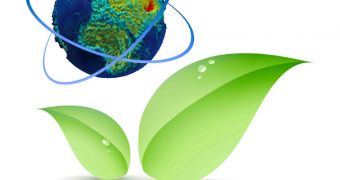Using data provided by the Gravity Field and Steady-State Ocean Circulation Explorer (GOCE) spacecraft, scientists were recently able to finish compiling the first map of the so-called Moho, the boundary between our planet's crust and mantle.
Geologists say that the latter lies and floats on the former, and being pushed by prevailing magma currents in various patterns. The crust is fragmented in several pieces, called tectonic plates, which collide with each other based on how they are driven from underneath.
For years, scientists have been trying to figure out where the edges of the crust end, and the top layer of the mantle begins, but limited scientific means have prevented them from cracking this mystery.
GOCE could not be used either, since it spent most of its time since being launched, on March 17, 2009, compiling a high-resolution map of Earth's gravitational field. It was only recently that experts could use the data the satellite returned for such applications.
The mission, managed by the European Space Agency (ESA), took off from the Plesetsk Cosmodrome, in northern Russia, aboard a Rockot delivery system. The latter is nothing more than a modified intercontinental ballistic missile (ICBM).
Experts believe that the new Moho map will enable them to gain a deeper understanding into how Earth's interior layers work and interact with each other. In turn, this could provide new data into how the planet formed, and also into the conditions that prevailed in the solar system at that time.
The new map was compiled as part of the GOCE Exploitation for Moho Modeling and Applications (GEMMA) project. The Moho boundary was named after Croatian seismologist Andrija Mohorovičić, who first proposed the existence of Earth's crust in 1909.
GEMMA has “now generated the first global high-resolution map of the boundary between Earth’s crust and mantle based on data from the GOCE satellite,” an ESA press release states.
“GOCE measures the gravity field and models the geoid with unprecedented accuracy to advance our knowledge of ocean circulation, which plays a crucial role in energy exchanges around the globe, sea-level change and Earth interior processes,” the document concludes.

 14 DAY TRIAL //
14 DAY TRIAL //